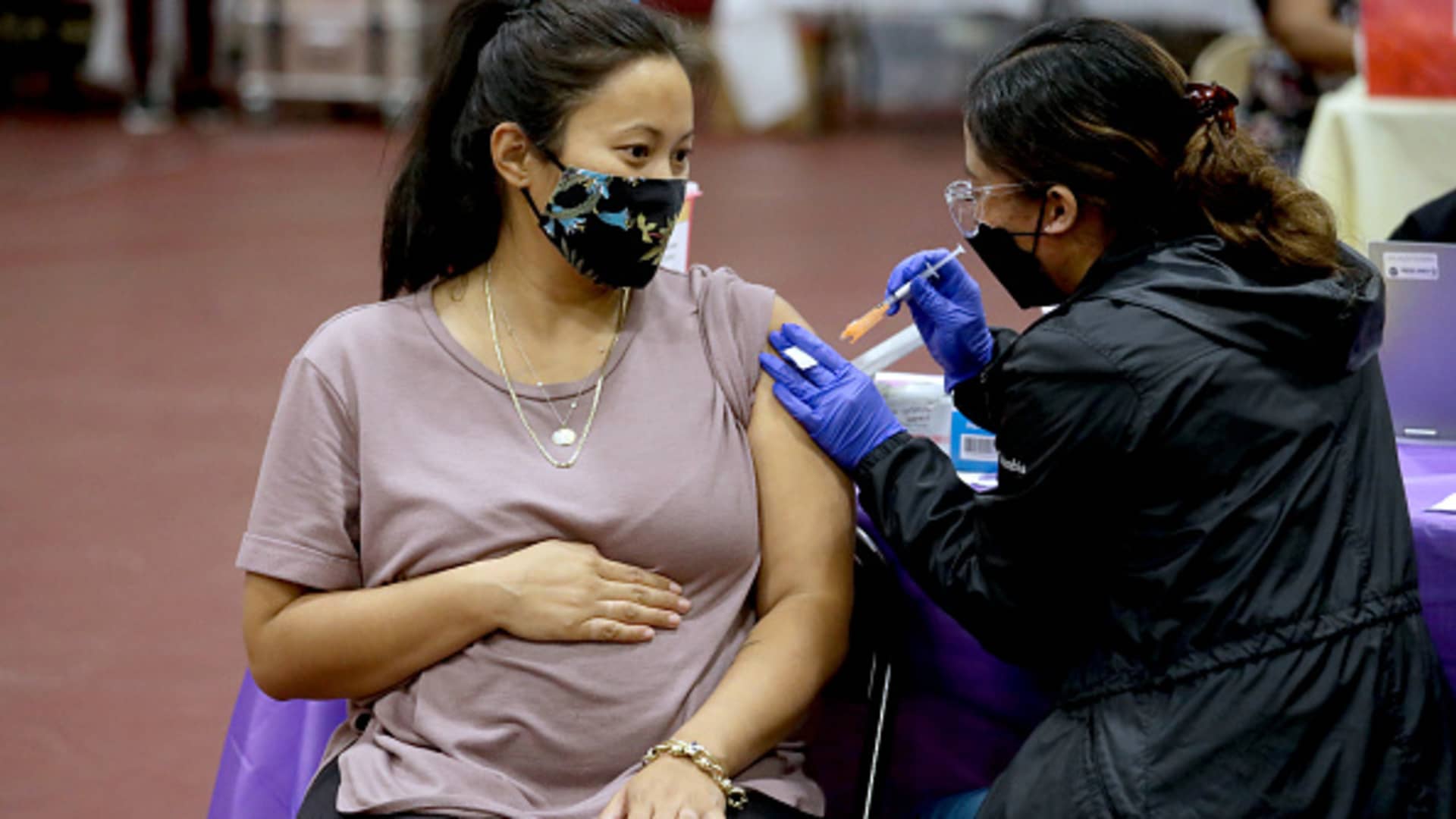New omicron boosters are now available, but it’s unclear how effective they will be


The U.S. authorized the first major makeover of the Covid-19 vaccines this week in an effort to stem an expected tide of infections and hospitalizations this fall.
But it’s unclear how much protection the new booster shots will provide. The Food and Drug Administration and the Centers for Disease Control and Prevention cleared the shots without any data from clinical trials that are testing the reformulated doses in humans.
The new boosters, authorized for people ages 12 and older, target the highly contagious and immune-evasive omicron BA.5 subvariant that has caused a wave of breakthrough infections over the summer. The shots also target the original strain of the virus that first emerged in Wuhan, China, in 2019.
The nation’s top health officials acted with urgency this summer to ensure the new boosters would roll out in time for the fall. They are worried that the waning effectiveness of the old vaccines is creating an opening for omicron to cause another wave of hospitalizations this winter as people spend more time indoors where the airborne virus spreads more easily.
Deaths and hospitalizations have climbed since April among the elderly, the most vaccinated age group in America, as omicron has continued to mutate into more and more transmissible subvariants that dodge the protection of the original vaccines, according to Heather Scobie, a CDC epidemiologist.
Dr. Peter Marks, who heads the FDA office that reviews vaccines, said the new boosters aim to restore the high levels of protection that vaccines demonstrated in early 2021. But Marks acknowledged that the federal government’s experts simply do not know yet whether the boosters will meet the high bar set by those doses.
“We don’t know for a fact yet whether we will get to that same level, but that is the goal here. And that is what we believe the evidence that we’ve seen helps point to,” Marks told reporters during a news conference after the FDA authorization Wednesday.
The FDA will conduct surveillance to see whether the boosters meet that goal, Marks said. When Pfizer’s and Moderna’s shots were authorized in December 2020, they provided more than 90% protection at preventing Covid.
Marks told reporters it will likely take at least another couple of months before human data on the BA.5 boosters is available to the public. But he said the FDA used basically the same process to authorize the new boosters that it has relied on for years to switch the virus strains in flu shots.
“We’re pretty confident that what we have is very similar to the situation that we’ve done in the past with influenza changes where we don’t do clinical studies for them in the United States,” Marks said. “We know from the way the vaccine works, and from the data that we have, that we can predict how well the vaccine will be working.”
The new boosters could prevent 2.4 million infections, 137,000 hospitalizations and 9,700 deaths if a new variant doesn’t emerge, according to a projection by a team of scientists that forecasts the trajectory of the pandemic, called the Covid-19 Scenario Modeling Hub.
But that projection is based on optimistic assumptions about booster coverage and efficacy, according to the scientists. The model assumes that the shots will prove 80% effective at preventing illness and the public will broadly embrace the new boosters. There is no efficacy data on the new shots and it’s unclear how strong public demand will be for them.
The CDC estimates that an early fall vaccination campaign with boosters could save the U.S. between $63 billion and $109 billion in medical costs by preventing hospitalizations and ICU admissions.
Pfizer and Moderna were originally developing new boosters to target the first version of omicron, BA.1, that caused the massive wave of infection and hospitalization last winter. But keeping up with the rapid evolution of the virus has proved challenging.
By the time the nation’s top health leaders moved in earnest in April to get new boosters ready, more transmissible subvariants had already driven omicron BA.1 out of prevalence. In June, the FDA asked the vaccine makers to switch gears and target omicron BA.5 after it rose to dominance.
This decision did not leave enough time for Pfizer and Moderna to complete human clinical trials on the new boosters before a fall vaccine rollout.
As a consequence, the FDA and the CDC are relying on human data from the clinical trials of the BA.1 shots to understand how the BA.5 boosters might perform. They also relied on data from studies in which the BA.5 boosters were tested in mice.
The CDC’s independent advisory committee backed the shots on Thursday in an overwhelming vote.
But several members of the panel also had reservations about the lack of human data.
“I really do struggle with a vaccine that has no clinical data that’s reported for humans, for those that would be actually receiving the vaccine,” said Dr. Oliver Brooks, a committee member and the chief medical officer at Watts HealthCare Corp. in Los Angeles.
Dr. Pablo Sanchez, the only CDC committee member who voted against the shots, called the decision to recommend the new boosters without human data premature.
“There’s a lot of vaccine hesitancy already — we need the human data,” said Sanchez, a professor of pediatrics at Ohio State University.
Dr. Doran Fink, deputy head of the FDA’s vaccine review division, told hesitant committee members that the new booster shots use the exact same manufacturing process as the old vaccines and contain the same total amount of mRNA, the code that instructs human cells to produce the proteins that provoke an immune response to defend against Covid.
Fink said the BA.1 and the BA.5 shots are similar enough to use data from the BA.1 human trials to get a good idea of how the new BA.5 boosters will perform.
Pfizer and Moderna presented data at the CDC meeting which showed that the BA.1 shots triggered a stronger immune response in humans than the old vaccines. The mouse studies from both companies on the BA.5 shots also showed a stronger immune response.
CDC Director Dr. Rochelle Walensky last week said waiting longer for human data from the BA.5 shots could mean the boosters become outdated if a new variant emerges.
“There’s always a question here of being too slow versus too fast,” Walensky told “Conversations on Health Care” in a radio interview. “One of the challenges is if we wait for those data to emerge in human data … we will be using what I would consider to be a potentially outdated vaccine.”
Moderna completed enrollment in its clinical trials last week and expects results by the end of the year. Pfizer’s clinical trials are ongoing, though the company hasn’t provided a time frame on when it will have data.
Brooks questioned why the FDA decided to go with a BA.5 vaccine when clinical data is available for the BA.1 shots that the vaccine makers were originally developing. Canada and the United Kingdom have authorized new booster shots that target omicron BA.1
Fink said the U.S. selected BA.5 based on the advice of the FDA’s independent committee, data from South Africa that indicated natural infection from the subvariant provides broader protection than infection from BA.1, and the fact that BA.5 is dominant.
Though the committee members had some hesitation about proceeding without the human data, they agreed the new boosters should have a similar safety profile to the old vaccines because they use the same platform. The Covid vaccines have been administered to millions of people in the U.S. with mostly mild side effects.
The most common side effects from the human trials of the BA.1 shots was pain, redness, swelling at the injection site, fatigue, headaches, muscle pain, joint pain, chills, nausea, vomiting and fever, according to the FDA.
Dr. Sara Oliver, a CDC official, told the committee that the risk of myocarditis, inflammation of the heart muscle, after a BA.5 booster is unknown. But health officials anticipate it will be similar to the risk observed with the old vaccines.
Pfizer’s and Moderna’s vaccines have been associated with an elevated risk of myocarditis in young men and adolescent boys mostly after the second dose. But the risk of myocarditis is higher from Covid infection than vaccination, according to the CDC.
Dr. Grace Lee, the CDC committee chair, sought to reassure the public that there’s a robust surveillance system to monitor safety, and that the panel will meet again if any new concerns emerge.
“I just want to make sure that the members of the public are aware that we’re continuing to monitor closely,” Lee said. “We have systems and teams that are continuing to monitor and to meet.”
This post has been syndicated from a third-party source. View the original article here.



